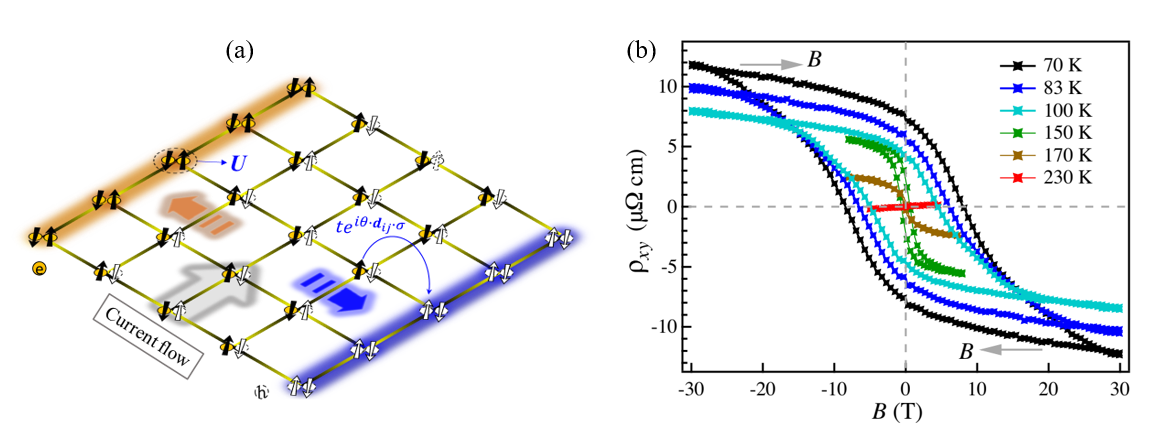
Researchers from High Magnetic Field Laboratory, Hefei Institutes of Physical Science (HFIPS) of Chinese Academy of Sciences (CAS) revealed the rich topology-correlation interplay and demonstrated a controllable material platform for such investigations.
The extensive study, which was conducted by a team led by Prof. HAO Lin, was on the correlation-topology interlay in moderated correlated electron systems.
Their study was published in Physical Review X.
In topological physics, the band topology often originates from spin-orbit interaction, which gave rise to complex hopping parameters. While this approach enjoyed great success in non-interacting or weakly interacting electronic materials, the consequences of complex hopping was understood in a drastically different context in strongly correlated systems due to the fundamentally different views of the electronic structure. More importantly, the combined effect of electronic correlation with nontrivial complex hopping remained poorly understood in the intermediate regime, which called for real experimental systems that could simulate and unveil the correlation-topology interplay.
In this work, researchers experimentally realized a square-lattice Hubbard model-system in [(SrIrO3)1/(CaTiO3)1] superlattices.
Researchers proved that the nontrivial electronic topology anticipated at the weak coupling limit led to an anomalous Hall effect (AHE), and a giant magnon gap in the Mott insulating state due to the finite correlation. By performing high-field AHE measurements at SHMFF, they revealed that the AHE not only signified Berry curvatures in the Hubbard bands but was also subjected to the self-competition of the electron-hole pairing.
Moreover, the magnon gap driven by the SU(2) gauge-invariant field was too large for the superexchange approach to account for. The intertwining of phenomena that were usually captured in drastically different pictures of the electronic state highlighted the rich and complex interplay between correlation and topology in the intermediate coupling regime.
The strategy of controlling gauge-dependent/-invariant complex hoppings through artificial design could provide valuable insights for investigating topology-related physics in other correlated materials.

(a) Schematic of anomalous Hall effect in the intermediate coupling regime; (b) Magnetic field dependent Hall measurements at different temperatures. (Image by HAO Lin)